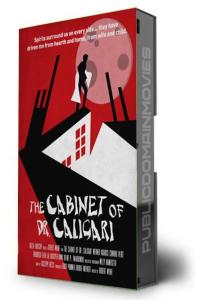The Cabinet of Dr. Caligari


The Cabinet of Dr. Caligari (1920): The Nightmare That Defined Cinema
Robert Wiene’s The Cabinet of Dr. Caligari is more than just a landmark of German Expressionism — it’s a fever dream that etched itself into the blueprint of modern horror and psychological thrillers. Released in 1920 and starring Werner Krauss as the sinister Dr. Caligari and Conrad Veidt as the haunting somnambulist Cesare, the film is a twisted tale of hypnosis, murder, and madness. With its jagged sets, skewed perspectives, and stark shadows, the film’s visual design broke all cinematic norms of the time, making reality feel like a hallucination — a style that would influence everything from Frankenstein to Batman: The Animated Series.
The film’s narrative, told through an unreliable narrator, was one of the earliest examples of the “twist ending” and psychological framing device — a technique that would later be echoed in films like Fight Club and Shutter Island. The Cabinet of Dr. Caligari is not just an eerie tale of mind control and murder; it's a post-WWI commentary on authority, control, and the fragile state of the human psyche. Its bold approach to set design and storytelling pushed cinema into the realm of high art, proving that film could be just as surreal, political, and disturbing as any other medium.
Yes — The Cabinet of Dr. Caligari is in the public domain, meaning it is free to watch, distribute, and reuse. This makes it a cornerstone of open-access cinema and a vital part of film education, artistic remix, and horror history.
Whether you’re a film buff, a horror fan, or just curious about where the genre truly began, Dr. Caligari is essential viewing.






